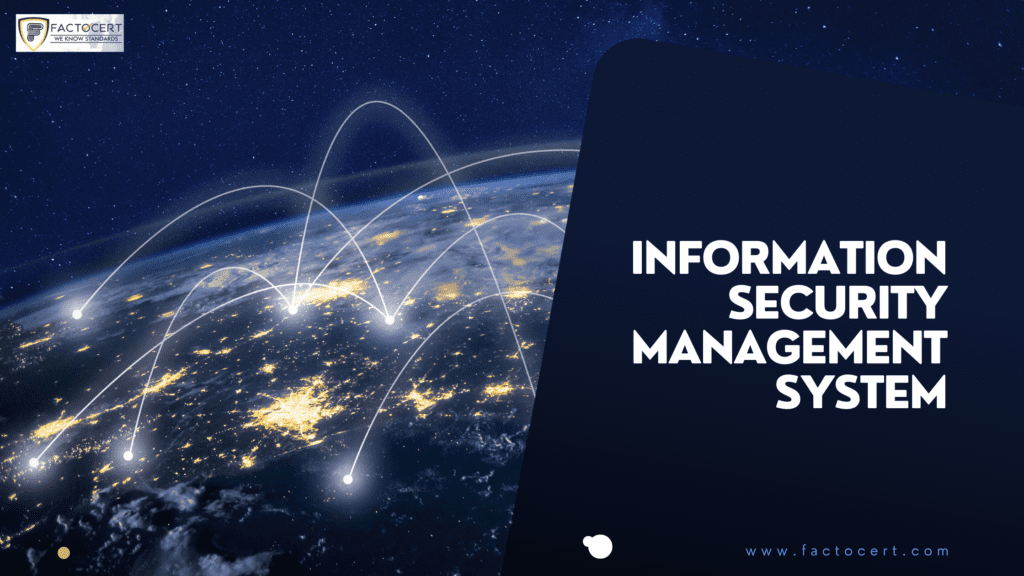ISO 27001 Certification in Myanmar. Information security breaches may be exceedingly hazardous to firms financially and in terms of their reputations. Implementing a robust security system can aid in mitigating security concerns, thereby enhancing the company’s reliability and standing in the eyes of prospective clients, suppliers, and business partners.
Multiple guidelines have been introduced recently to increase awareness of the threat to information systems and networks.Here is a comprehensive overview of ISO 27001 Certification in Myanmar and a certification guide.
What is the ISO 27001 Certification in Myanmar standard?
ISO 27001 Certification in Myanmar is a standard for information security management created and governed by the International Business for Standardization (ISO), demonstrating that an organization has structured its IT system to safeguard its information methodically and cost-effectively.
ISO 27001 Certification in Myanmar ensures that suitable controls (addressing confidentiality, integrity, and availability) are in place to protect interested parties’ information. These include your customers, staff, suppliers, and societal requirements.
Why Is ISO 27001 Certification in Myanmar Certification Necessary?
Customer Retention: An ISO 27001 Certification in Myanmar-compliant ISMS can assist in demonstrating to suppliers and customers that you take information security seriously. It strongly indicates your organization’s dedication to efficiently managing information security.
Compliance With International Standards: Recent events in the regulatory and corporate governance domains have imposed even more stringent requirements on the integrity of information and the common commercial necessity to protect secret information. Implementing an ISMS demonstrates compliance with international requirements for information security.
Competitive Advantage: ISO 27001 Certification in Myanmar accreditation demonstrates that your corporation takes information security seriously and provides a competitive advantage for acquiring new clients.
Eight Measures To ISO 27001 Certification in Myanmar Accreditation
Implementing ISO 27001 Certification in Myanmar within a company can be difficult. However, as the adage goes, nothing worthwhile is easy, and ISO 27001 Certification in Myanmar is worthwhile.
To make things easier, a list of eight stages summarises how to apply for ISO 27001 Certification in Myanmar.
1.Obtain Management Support
If implementing these processes for the first time, you should examine the management requirements overall aim. Top management is ultimately accountable for the management system’s efficacy; hence, securing their buy-in is vital.
Sufficient resources (people, equipment, time, and money) should be allocated to create, implement, and monitor the ISMS. Internal audits uncover improvement possibilities and confirm that the management system is functioning as intended.
Management review allows top management to evaluate and comprehend the effectiveness of the management system’s operation and contribution to the business.
2.Establish the scope
It is crucial to precisely describe the logical and geographical scope of the ISMS to identify the limits of your ISMS and security responsibilities.
The scope should identify the individuals, locations, and data the ISMS covers. Once the area has been defined and documented, it is possible to identify the information assets covered by the size, value, and owner.
3.Compose your Information Security Plan
There are other references to the policy in different ISO 27001 Certification in Myanmar standards and in Annex A, which specifies the policy’s contents. For example, ISMS objectives must align with ISMS policy. Certain control objectives will necessitate the implementation of additional procedures.
4.Establish a process for risk assessment and management
ISMS is built upon the foundation of risk assessment. It guarantees that security measures are implemented where they are most needed, are cost-efficient, and are not imposed where they are least effective.
The process of risk assessment includes the identification and valuation of information assets. This evaluation is not only monetary. In addition, it takes into account additional factors, such as reputational loss and regulatory compliance compromise. This is where context has a significant impact.
The procedure should consider all threats, vulnerabilities, and opportunities related to the assets and their exploitation. Lastly, it would be best if you determined the level of risk and the controls that will be used to mitigate it.
5.Implement a Risk Management Strategy
The risk assessment establishes risk levels, which are then compared to the allowed level of risk based on the company’s security policy. Suitable measures are done to manage risks that exceed the acceptable level, with possible standards including:
We are implementing Annex A-selected security controls to decrease risk to an acceptable level. It accepts the risk by the management’s risk acceptance policy and criteria.
By modifying the security environment, the risk is eliminated. We are transferring risk through purchasing adequate insurance or outsourcing the management of physical assets or business activities.
The risk treatment plan is used to manage risks by identifying the activities performed and planned and the timelines for completing any lingering actions. The program should prioritize the steps and include detailed action plans and responsibilities.
6.Implement awareness and training programs
Every employee is accountable for the security of information systems and networks. Employees should understand the importance of securing information systems and networks and what they can do to increase security. They should receive training in adopting and implementing all new procedures and policies.
7.Measure, monitor, and evaluate your ISMS
If you do not monitor and review your ISMS, you will be unable to determine whether it is performing as planned. Annually, you should assess and check if the realized goals align with the established objectives.
If you are not attaining your goals according to your established criteria, something is amiss, and you should take corrective action. Responsible staff should analyze and reevaluate the security of information systems and networks and modify security policies, practices, measures, and processes as necessary.
In addition, you should regularly undertake internal audits of your ISMS. Internal audits can uncover nonconformities that might remain undetected, averting considerable productivity losses. The results of your internal audit serve as inputs for the management review; depending on the report, management must make key judgments.
8.Certify your ISMS
After successfully implementing the ISMS in your organization, you may pursue ISO 27001 Certification in Myanmar certification; if so, you must prepare for an external audit.
Typically, certification audits consist of two phases.
The initial audit conducted by a third-party auditor examines if the ISMS of the organization has been built in line with ISO 27001 Certification in Myanmar’s standards. If the auditor is satisfied, a more detailed inquiry will be conducted.
This assures that the review conforms to ISO 27001 Certification in Myanmar, in contrast to non accredited organizations that frequently promise certification regardless of an organization’s compliance situation.
This evaluation will result in either a pass or a fail. If you pass, you earn a highly appreciated certificate; if you fail, you will need to address nonconformities before resubmitting for another audit or a special evaluation of the nonconformity.
ISO 27001 Certification in Myanmar Certification is performed on a three-year cycle; therefore, the process normally proceeds as follows:
Stages 1 and 2 are followed by certificate issuance.
- Certificates are issued after stages 1 and 2.
- The first surveillance audit (usually every year or more often if necessary).
- The second surveillance audit.
- Renewal of certification and a more detailed evaluation in the third year.





